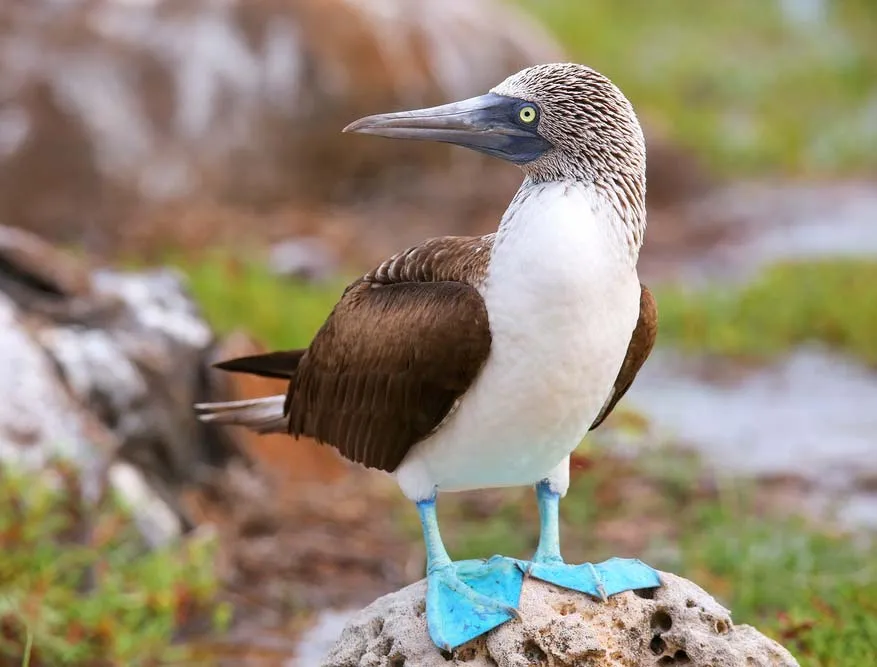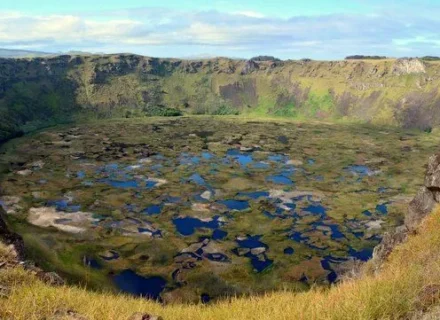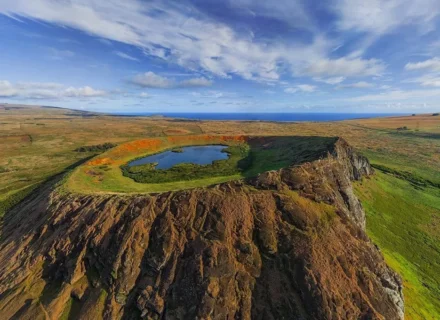Located 600 miles off the cost of Ecuador lies a cluster of islands that have inspired generations to research and protect the animals that call it home. In fact, this is where Charles Darwin was inspired to create the Theory of Evolution. The Galapagos Islands are a haven for wildlife and nature lovers, offering a true taste of wilderness for those who visit as well as beautiful, untouched landscape.
The islands are home to some 400 species of marine life and around 200 island animals, many which are endemic to the Galapagos. Walk amongst the giant Galapagos tortoise, watch sea lions bask on the beaches and witness blue footed boobies spectacular dance during the mating season. Believe us, you won’t put that camera down!
The Ultimate Galapagos Wildlife Guide
Blue-Footed Boobies
The male Blue-footed booby is easily recognized by its bright blue feet which it uses to display an elaborate mating ritual for the females – by strutting up and down and lifting one foot at a time. The boobies are native to subtropical regions of the Pacific Ocean and you’ll find them all over the Galapagos Islands. Did you know that their nostrils are permanently sealed? They can hit the water at an incredible 60 mph, so having open holes on their face just isn’t practical.
Red-Footed Boobies
Another member of the booby family, the red-footed boobies are unique looking birds, with bright red feet and pink and blue coloured beaks. They nest in large colonies and when not breeding are most often found at sea, diving into the ocean to catch small fish. Both parents normally care for the chicks, yet a female only lays one egg every fifteen months! This might seem very little, but the long lifespan balances it out – they live over 20 years!
Marine Iguana
The exotic marine iguana is endemic to the Galapagos Islands. It has the unique ability to forage in the sea which is why it’s often also known as the saltwater iguana. This causes most marine iguanas to sport a salt-encrusted face. Marine iguanas are herbivores and survive only on algae and seaweed, so while they can look a little scary they are gentle creatures that do no harm to the other wildlife around them. Each island in the Galapagos is home to marine iguanas.
Galapagos Sea Lion
While sea lions are found all over the world, the Galapagos Sea Lion is found only on these remote islands. Like many of the animals that live in the Galapagos, they have plenty of food and little to no predators, therefore have a thriving population. They are known as the most relaxed of the Galapagos wildlife, mostly seen basking on the shores. Sea lions have a very strong bond with their mum and will be nurtured for around three years.
Galapagos Penguin
The Galapagos Penguin is the only one of their species to survive in a tropical climate, north of the equator. The average penguin measures under 20 inches, making them the second smallest species of penguin in the world. There is thought to be fewer than 2000 still in existence, officially placing them on the endangered species list. Due to their small size, they have many predators, including sea lions, sharks, and on land snakes and rats.
Galapagos Fur Seal
Galapagos fur seals are quite small in size and resemble Galapagos sea lions, except for their thicker and fuzzy coat. They live in large colonies on the shore and only tend to leave to feed. You are more likely to see the sea lions over the fur seals, since the fur seals prefer to hang out in shady and rocky parts that are slightly more hidden. They tend to hunt at night when prey is easier to catch in the dark – it’s why their eyes are so large!
Galapagos Giant Tortoise
The Galapagos giant tortoise is the largest of its species, the largest recorded was an impressive 6 feet long! They are found all over the Galapagos Islands but are most noted on Santa Cruz Island. In fact the Galapagos Islands were named after these gentle giants – when the Spaniards arrived in 1535 all they saw was tortoises and decided to name the area “Galapagos” which translates as tortoise in Spanish.
Frigate Bird
This unusual bird is known for its distinct mating ritual, when the males puff out their bright red throat to an alarming size, you would almost think it might burst! The wings on both females and males can reach an incredible 2.3 meters, which is the largest known wing span to body weight of any bird. The Frigate Bird isn’t a “diver” and instead skims the surface of the water for fish. They have also been known to chase away other birds and steal their meal!
Land Iguana
Like the marine iguana, the land iguana is endemic to the Galapagos Islands. It lives in the dry lowlands of many of the islands including Santa Cruz, Isabela, Fernandina and North Seymour. Also like the marine iguana they are naturally herbivores, but as they do not fetch algae and seaweed from the ocean they survive only on cactus and other flowers on the island. They have also been known to snack on insects when the opportunity arises.
Waved Albatross
This is the largest bird in the Galapagos Islands with a wingspan of 2.5 meters. They spend all their time at sea, gliding above the ocean. They only return to shore to mate, and the main breeding grounds are on Espanola island but they have occasionally been spotted elsewhere. The waved albatross mates for life, and always find their way back to one another.
Galapagos Flightless Cormorant
With wings too short to fly, the flightless cormorant has more than made up for this lost ability with their underwater activities. They are endemic to the Galapagos Islands and are the only of their species who cannot fly. It is thought this is possibly due to the fact they have no predators on the islands and so have no real reason to fly away. They normally feed on eels and octopus, which they reach by diving down to the ocean floor.
Green Sea Turtle
The Galapagos green turtle is commonly seen around the islands, especially when out snorkelling. While adults are mostly herbivores, the young have been known to eat anything they come across. Mating season occurs in the warmer months when females lay up to 200 eggs on the beach – the eggs then incubate in the tropical heat for around 50 days before the fight to reach the ocean begins.
Dolphins
Five species of dolphin can be seen throughout the Galapagos. They are the Bottlenose, Common, Spinner, Risso’s and Pantropical spotted dolphin. The latter three however are only seen during the migrating season and do not normally live around the islands. The best opportunity to spot dolphins are on a boat cruise between the islands. You are much more likely to spot them over whales, as they often enjoy riding the bow wakes.
Whales
Whales commonly seen around the Galapagos Archipelago are Orcas, Blue Whales, Humpback Whales, Sperm Whales, Minke Whales and Bryde Whales. The best time to spot them is between June and October, but since whales cover a lot of ground in a day it can be difficult for local guides to gage when they will show up. Your best chances are on a boat trip further out at sea and if you do spot one – count yourself lucky.
Sharks
An impressive 32 species of shark can be found in the waters surrounding the Galapagos Islands, more notably around the northwest around the Darwin islands. Confusingly, the “Galapagos” shark is also found throughout the Pacific, Indian and Atlantic Oceans, but was only called so because it was first seen in the Galapagos. Don’t worry about snorkelling though – incidents involving sharks are far and few between with only 3 reported with tourists since the 1950’s!



